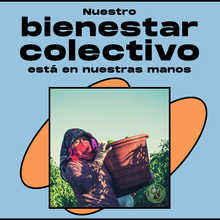
Our campaigns for you to use
We worked with IDEO.org, a nonprofit design studio, to build contact tracing campaigns in partnership with a community of farmworkers in Florida, and a community of Congolese refugees and migrants in Texas. Our goal was to co-create messaging that built awareness and creates willingness to participate in contact tracing. Given that contact tracing efforts may be limited in some locations given the nature of the pandemic, our community leaders suggested we also create messaging on safety and protection in the absence of contract tracing.
Developed in partnership
A guiding principle of our work is that solutions should be developed in genuine partnership with affected communities. This means empowering community leaders to lead the creation and dissemination of their messaging campaigns. After all, community leaders are part of the community — leveraging their knowledge allows more rapid response and fewer iterations. Bringing the community into the process also creates buy-in and reduces isolation. With that in mind, IDEO.org worked directly with community members to create campaigns that were meaningful and effective.
Post to social media

Send by text or WhatsApp

Hang posters in high-traffic areas

The goal of this campaign is to ensure migrant farmworkers have workarounds to reduce the spread of COVID-19 in the absence of resources or infrastructure for contact tracing.
The goal of this campaign is to build an understanding among Congolese refugees of what contact tracing is and is not, and what role it has in preventing the spread of COVID-19.
Simple, clear, direct language is key.
Although lightheartedness and humor are part of the fabric of some of the communities, it’s not a real motivator.
Positivity is more motivating than instilling fear and worry.
Love and collective wellbeing are two messages that resonate.
Translations should embrace colloquial idioms, proverbs, and dialects.
Translating a sentence literally may make sense, but it isn’t as effective.
There’s a fine balance between scientific and humanistic.
We need to lean into the human side of it all.

Seeing real people is important.
Illustrations weren’t cutting it.
Following COVID-19 safety guidelines is crucial.
This is true even in photography.

Resonant photography will really look like the community.
This includes the types of clothes people wear, the situations they’re in, and their perceived status in society.

People want to see their community reflected in the campaign.
However, there’s a thin line between representing the community and implicating the community.
Adaptation is a key communications strategy.
A message that works for some won’t work for others.
Leaders should be empowered to adapt messages.
This is especially true when new guidance is released.
You need a trusted messenger to deliver the message.
It could be through WhatsApp or at a faith-based meeting.
There is no one right answer.
Messages will always need to be adapted to fit a community's needs.














